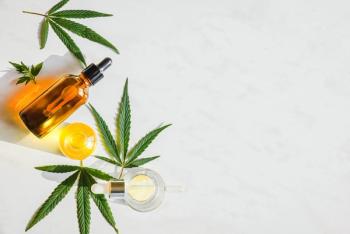
Real-Time Cannabis Cultivation Insights: An Interview with James Wylde at Cannabis Science Conference 2024
In this interview at the Cannabis Science Conference, James Wylde, President and CEO of Greenlight Analytical, discusses new cannabis cultivation tools.
Filmed live at the Cannabis Science Conference Spring 2024 in Kansas City, Missouri, Cannabis Science and Technology sat down with James Wylde, President and CEO of
Here, Wylde discusses the importance of crop steering, current technologies and their challenges, and why growers should measure the state of their crop in real time. He also shared details about Greenlight Analytical’s HarvestIQ technology in assisting growers with cannabis cultivation in real time.
During the conference, Wylde also presented, “Maximizing Quality & Revenue with Daily Analytics,” in the Cultivation Track.
Watch the onsite interview at the Cannabis Science and Technology booth and read a partial transcript below for insights into cannabis cultivation innovations.
Is there an efficient way that growers can implement testing during the growing cycle?
James Wylde: Sure, they could send samples to a lab. But as I mentioned earlier, labs are too slow to get results back in time. Now, growers could build their own labs. However, to build an analytical chemistry lab is very expensive, takes a lot of specialized skills, a lot of specialized equipment. It's really too cost prohibitive, too labor intensive prohibitive for most producers to implement their own lab. Even if they do build their own lab, sometimes the results come back in hours to even a day, even from a typical analytical lab. So it's very important for producers to have access to technologies that give them very accurate results on how the plants are doing, but doing it in real time and doing it accurately. And being easy enough to use that they don't have to go and hire PhD scientists to operate them.
So for example, in our case, we develop the HarvestIQ, which is based on the same technology that they use in the laboratories, but we build some technology around it that makes it a lot easier to use than a typical lab instrument, and utilizes things like AI and machine learning to make the results easy to understand that you don't need specialized skills to operate them. It's more and more important that producers have access to these sorts of technologies for the whole spectrum of growing indoors. For example, all these systems, as I mentioned earlier, are all connected together. So they're not controlling different things independently. They're all being controlled together. It's important that you have access to technologies that also feed back to the control system to make sure those knobs that I mentioned earlier are turned the right way. So for example, with the HarvestIQ, it can operate as a node in a network. So through our partners like Grownetics, we implement this as another device on the network, so that the conditions are changed when they're trying to steer the crop, the plants are measured, and those results are immediately fed back into the overall control system for a facility.
Newsletter
Unlock the latest breakthroughs in cannabis science—subscribe now to get expert insights, research, and industry updates delivered to your inbox.




